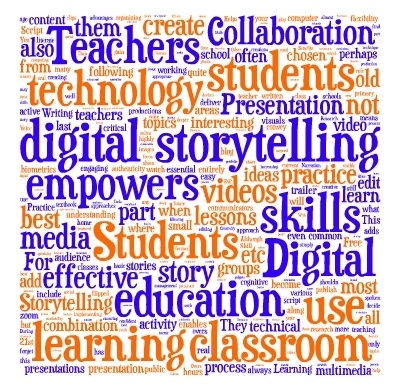Storytelling In Digital Learning
Humans have always been fascinated by stories. The simple reason behind this is the fact that we love narrative, and the scientific one, according to neurologists, is that the constant firing of our neurons in response to fictional stimuli (i.e., stories) strengthens and refines the neural pathways that lead to a better social and empathetic ability as well as skillful navigation of life’s problems. Stories also evoke emotions in us humans, which is why they have been used in business as long as there has been business to speak of. The first businessmen knew that facts speak to the mind, but stories speak to the heart. After all, what is marketing and advertising if not storytelling? You market and advertise a product or service alongside a story, in order to get customers to buy the product or service. But the benefits of storytelling for a business organization aren’t limited to marketing and advertising. In this article, we’ll discuss how corporate organizations can use storytelling to create compelling digital learning.
1. Get People Invested In Your Story
Although stories inherently evoke emotions in people and get them invested in the narrative, not all stories are good at it, which is why in order to get your learners invested in the story in your digital learning courses, you need to create characters in the story that they can relate to. Your characters need to reflect the learner, so that they can see themselves in the character, care about what happens to the character and have a vested interest in helping the character win in the story.
2. Make Sure The Story Has Memorable Parts
What makes a great story is certain parts that make it memorable. When using storytelling in your digital learning course, make sure that it has sections that are memorable. Doing so ensures that the information you pass on through the story will also be retained. This happens because they remember the memorable part, and the information around it comes to them naturally when they try to recall it.
3. Serve Information On The Story, Rather Than Vice Versa
As mentioned before, the story in your course should be the vehicle to deliver information, rather than the information being the vehicle to deliver the story. Keep your focus on delivering skills and knowledge to the learner, just in the form of a story. Learners know that they’re taking the course to learn, not to be engaged or entertained. But while they take the course, if they’re engaged or entertained, that increases absorption and retention.
4. Don’t Use Storytelling In The Entire Content
Now comes the important part. Your whole digital learning content doesn’t have to be a story. In fact, it shouldn’t be. Instead of one narrative throughout the whole length of the course, create an individual short story in each module or learning bit. This way, you don’t have to create and remember complex relationships between characters, which learners would remember, and thus you don’t run the chance of making a mistake in presenting their relationships inaccurately down the line.
5. Keep The Story Interesting And Unpredictable
An important aspect of a good story is that it raises curiosity in the minds of the audience, who, in this case, are the learners. A story that is unpredictable keeps learners interested, and their eyes glued to the screen to see what will happen next. When learners continuously try to predict what will happen next, it ignites active learning because they’re paying attention.
Storytelling is one of the most effective ways to relate to your audience and facilitate a connection with the content, enhancing learning and memory recall. This is why L&D professionals and digital learning designers should try to use storytelling in the courses they create as much as they can. The idea is to put the learner in the middle of the story so that they can feel the events in the story happening in front of them. If you can manage that, your course will be engaging, entertaining and edifying.










